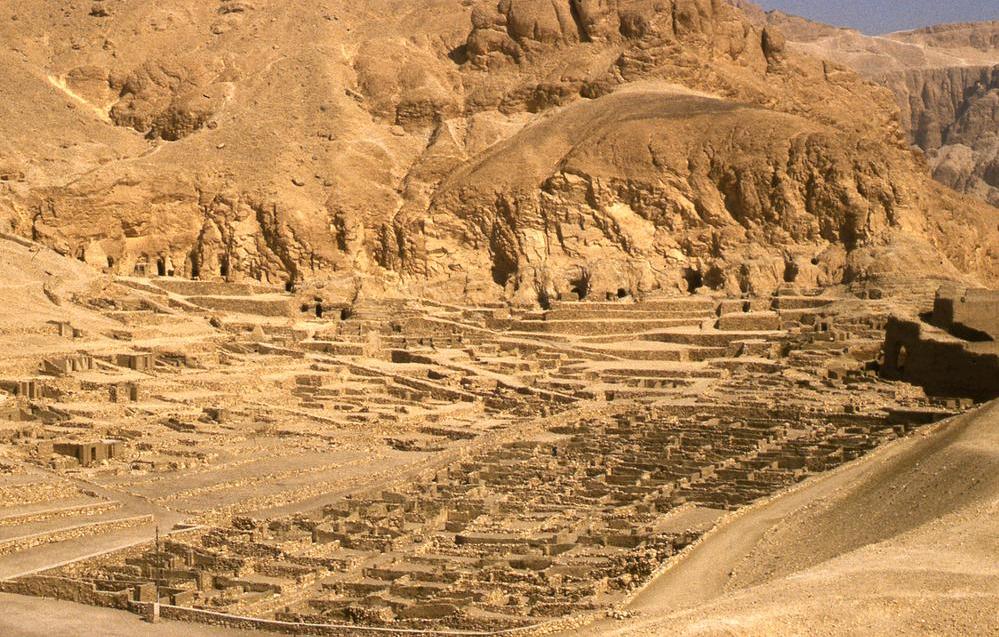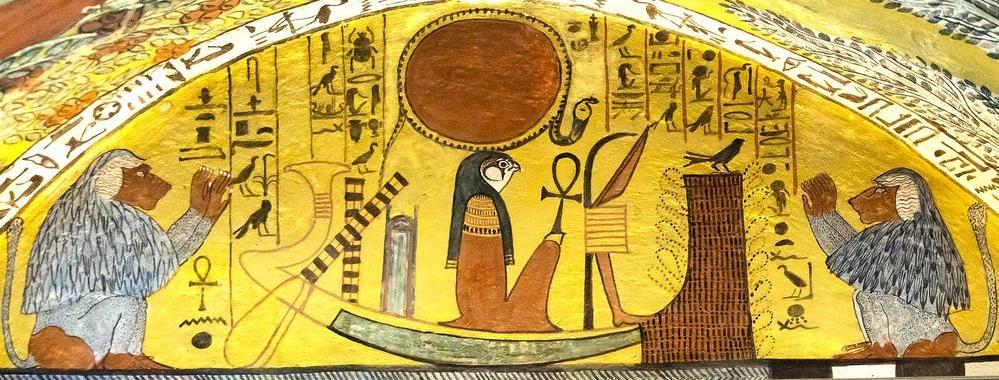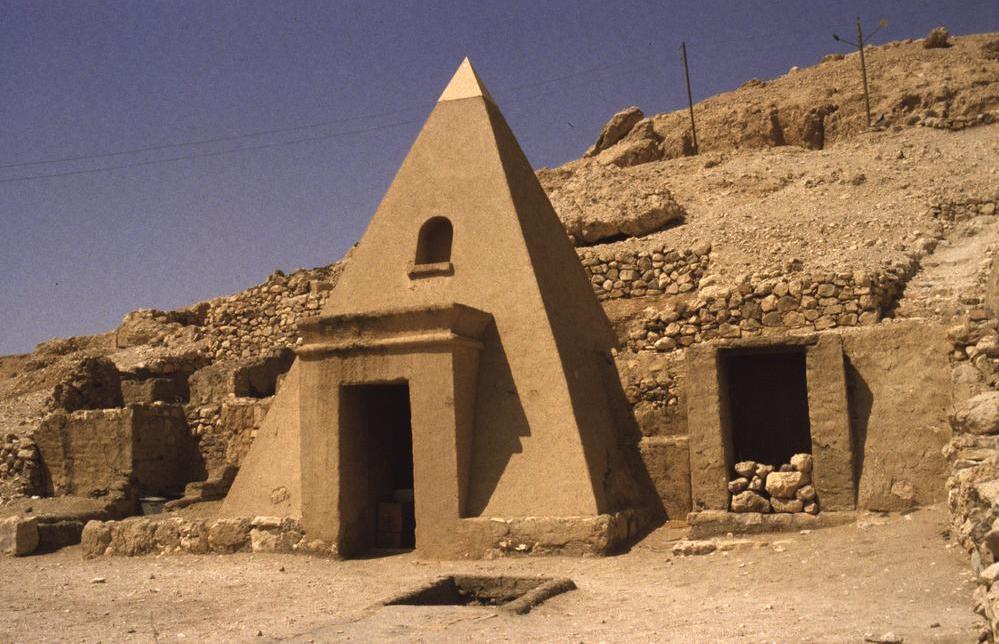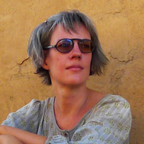Recordings will be made available for those unable to attend the live sessions!
In these lectures, we will follow the history of the settlement of Deir el-Medina, the village of the workmen who built the tombs in the Valley of the Kings, from its foundation in the early 18th to its abandonment in the late 20th Dynasty (ca. 1470 to 1070 BCE). We will explore how daily life in the village was organised and which role the preparation for eternity played for its inhabitants.

The village of Deir el-Medina with the tombs of the workmen in the background.
Highly skilled through their work in the royal tombs, the workmen built their own richly decorated tombs in the cemeteries around the village and produced – and traded – their own funerary equipment. As the sector grew, producers and buyers started to record their transactions on ostraca (inscribed ceramic and limestone sherds). From these we learn about the economic dimensions of equipping a burial, e.g. which kinds of goods the inhabitants of Deir el-Medina mobilised when they wanted to purchase a coffin, or how producers adapted their skills and their strategies to succeed in this field.
Intact burials – namely the tomb of Kha and Merit and the burial of the family of Sennedjem – in combination with this rich textual record allow a detailed reconstruction of the processes of assembling the burial equipment and the burial itself. They also alert us to a range of other aspects, including intracultural robbing, subsequent inspections and tidying-up as well as the reburial of material from disturbed tombs.

Painted decoration in the burial chamber of the tomb of Sennedjem in Deir el-Medina (TT1)
Through this evidence, we will uncover how different factors – religious concepts of how to gain and maintain the desired existence after death, access to knowledge and economic resources, but also individual and collective experiences and aspirations, as well as the contingencies of when and how someone died – influenced mortuary provisions.
In sum, the course will advance your knowledge of both, Deir el-Medina and ancient Egyptian mortuary practices and offer a new and unexpectedly detailed view on these subjects.

The course is open to everyone, whether they are beginners in learning about ancient Egypt or life-long enthusiasts. A summary chronology and visual material will be provided in printable format before the course to enhance engagement by allowing participants to retrace and map the content discussed in the course for themselves.
Course Outline
Please note that main content will be delivered between 14:00-17:00, though some optional participation (quizzes, Q&A, etc.) may continue beyond that time.
Saturday 18 October 2025, 14:00-17:00 (UK time)
Week One - Deir el-Medina in the 18th Dynasty (c. 1550–1346 BCE)
After an introduction to the site and its integration in the wider landscape of the Theban Necropolis, including the Valley of the Kings, we will explore the early history of Deir el-Medina from its foundation under the first rulers of the 18th Dynasty until its first peak just before the Amarna Period. We will look at the content of the tomb of Kha and Merit, which was found intact in 1906 – and is considered the richest non-royal tomb of New Kingdom Egypt, second only to the burial of Tutankhamun.
Saturday 25 October 2025, 14:00-17:00 (UK time)
Week Two - Ramesside Deir el-Medina (c. 1295–1069 BCE)
This week is dedicated to Deir el-Medina in the Ramesside Period. We will trace the re-founding of the community of workmen after the hiatus of the Amarna Period and follow the fate of the workmen and their families through the succeeding two hundred years. A uniquely rich textural record (many of the workmen were literate!) allows us to learn about their everyday life and their preparations for the afterlife. There are stories about economic advancement, social rivalry and making ends meet – and about how best to approach the purchase of your burial equipment in ancient Egypt.

Outside the Tomb of Sennedjem in Deir el-Medina (TT1)
Booking and information
Register for your place in advance using the link below. Here, you can select to pay for optional add-ons. You can buy a personalised certificate for £5.99, featuring your name, the event name and start date, which will be signed by the EES Engagement Manager to confirm your attendance at this online course.
After registering, you will receive a confirmation email containing information about your booking. If you do not receive your email, then please check your junk folders before contacting the Egypt Exploration Society. The course will be held on our Zoom platform and attendees will be able to interact by asking questions, using the chat and polls. It is not necessary to have a working webcam or microphone for this course. The online course will be complemented by Google Drive, where resources will be uploaded.
Please ensure that you have read our guide to attending EES online events before the course begins.



